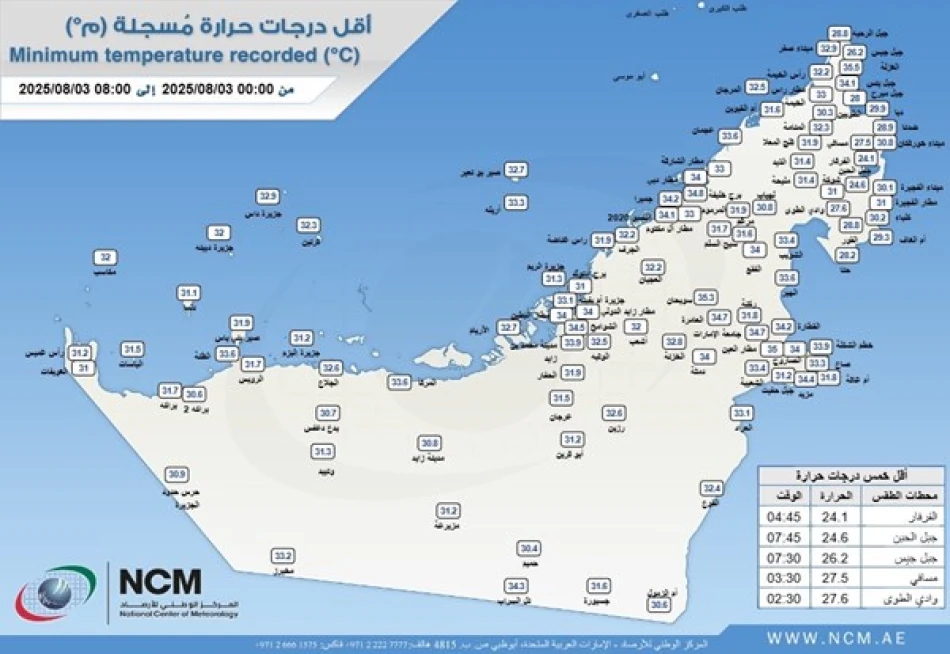
UAE Experiences Chilliest Temperature of 24.1°C, Offering Respite from Scorching Desert Heat
UAE Records Surprisingly High Minimum Temperature as Regional Climate Patterns Shift
The UAE's National Center of Meteorology recorded a minimum temperature of 24.1°C (75.4°F) in Farfar, Fujairah on Sunday morning—a reading that underscores the country's consistently warm climate even during cooler periods and highlights broader regional weather trends affecting the Gulf states.
Temperature Reading Reflects Gulf's Thermal Characteristics
The temperature reading, recorded at 4:45 AM local time in the mountainous Fujairah emirate, represents what many temperate regions would consider a comfortable room temperature. This measurement in Farfar—typically one of the UAE's cooler locations due to its elevation and proximity to the Hajar Mountains—demonstrates the persistent warmth that characterizes the Arabian Peninsula's desert climate.
Geographic Context of the Reading
Fujairah's location on the UAE's eastern coast, facing the Gulf of Oman rather than the Persian Gulf, typically experiences more moderate temperatures than the country's western regions. The emirate's mountainous terrain and coastal position usually provide some relief from the extreme heat that dominates much of the UAE, making this minimum temperature reading particularly noteworthy for regional climate monitoring.
Implications for Energy and Economic Planning
Such consistently high minimum temperatures have significant implications for the UAE's energy consumption patterns and economic planning. When nighttime temperatures remain above 24°C, air conditioning systems continue operating at high capacity throughout the night, maintaining pressure on the electrical grid and energy infrastructure.
This sustained energy demand affects everything from utility planning to real estate development strategies, as developers must account for year-round cooling costs when designing residential and commercial properties. The reading also impacts tourism planning, as visitors from cooler climates often underestimate the UAE's nighttime warmth.
Regional Climate Patterns and Future Trends
The temperature reading aligns with broader climate trends across the Gulf Cooperation Council states, where minimum temperatures have shown an upward trajectory over recent decades. Similar patterns are observed in neighboring countries like Saudi Arabia, Qatar, and Kuwait, where nighttime cooling has become increasingly limited.
These sustained high temperatures reflect the region's unique position between major water bodies and vast desert expanses, creating thermal conditions that persist well beyond daylight hours. The phenomenon has implications for urban planning, agricultural scheduling, and outdoor event timing across the Emirates.
Comparative Regional Context
While 24.1°C represents a minimum for the UAE, it would be considered a maximum temperature in many parts of northern Europe or North America during winter months. This stark contrast highlights the Gulf region's role as a global climate outlier, where seasonal temperature variations remain relatively narrow compared to continental climates.
 Layla Al Mansoori
Layla Al Mansoori







